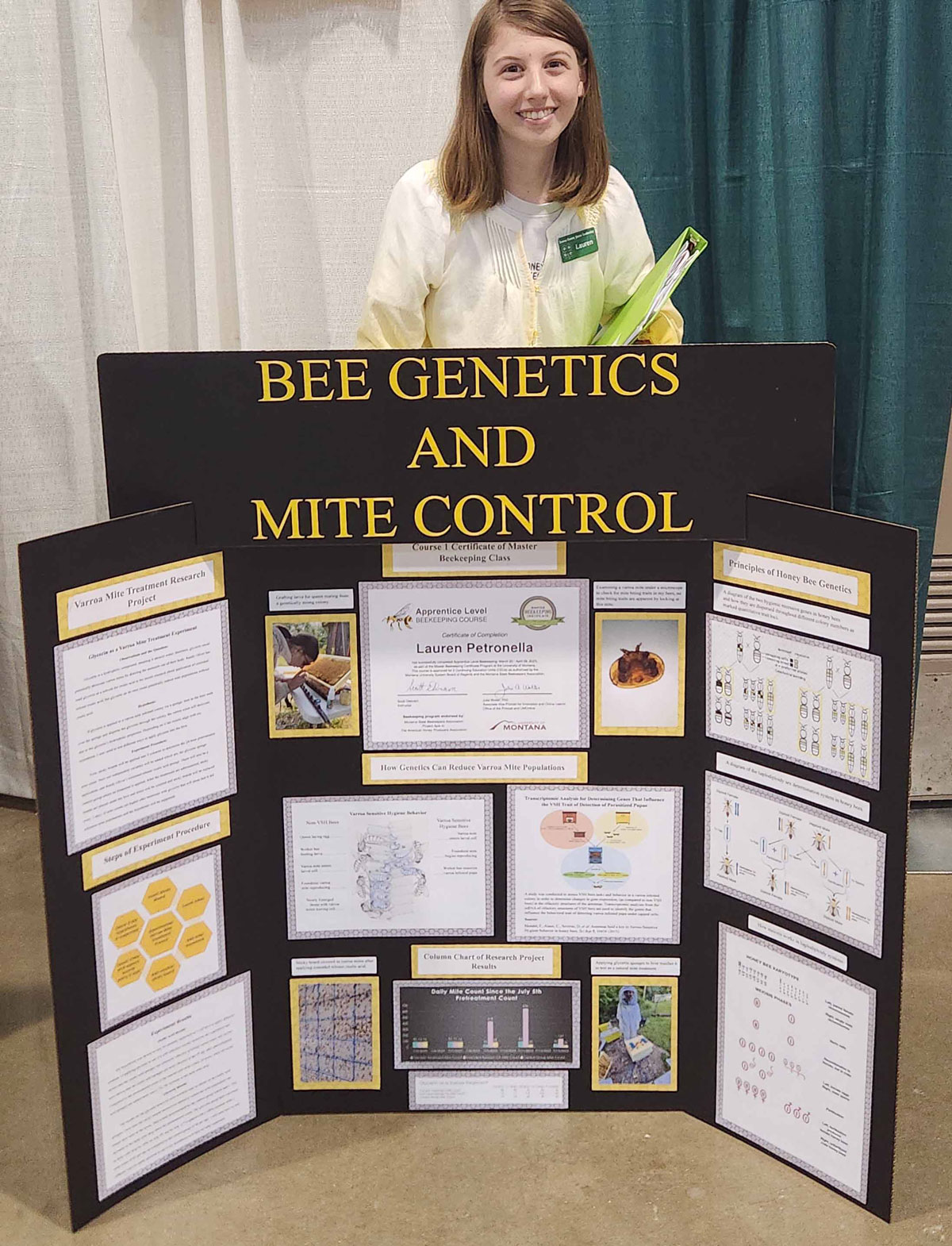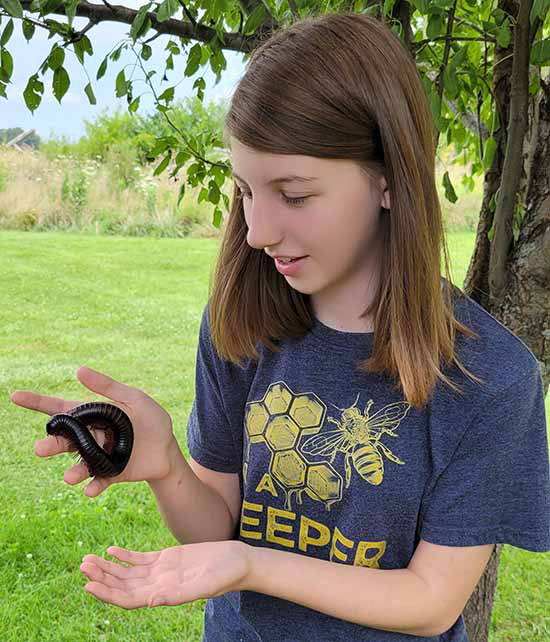A little-known fact about the Madagascar cockroach—a wingless variety of the common household pest which can hiss by expelling air through its breathing holes—is that it sometimes inspires homeschooled teens.
Receiving one of these four-inch insects as a Christmas gift five years ago prompted Lauren Petronella, now 16, to take her casual study of all things bug-related to a higher level. Since then, she’s won a pair of blue ribbons at the Ohio State Fair for entomological presentations.
“I’ve always found bugs to be misunderstood,” she said. “They’re really beautiful creatures.”
Discovering the Benefits
Lauren discovered she had more time to pursue her special interest after her parents switched to homeschooling about six years ago.
“My mom wanted me to get more out of my education,” Lauren explained.
Homeschooling quickly delivered another unexpected benefit. When Lauren joined a 4-H club organized specifically for homeschooled students, she found the group provided a comfortable environment for interacting with others.
“I was actually very shy in school,” Lauren recounted. But thanks to homeschooling and her 4-H group, she added, “I’ve become more social, a lot more confident.”
It also helped bring a sharper focus to her involvement with bugs.
After several years with 4-H, during which she earned multiple awards at the county fair, Lauren compiled a project that involved collecting 50 different insects in 2021.
“Most of them were just from my backyard,” she said.
Lauren described and identified each insect using their scientific names. She won her first state fair blue ribbon for the project, which was then displayed at The Ohio State University’s Wooster campus, in keeping with the school’s focus on food, agricultural, and environmental sciences.
Zooming in on Bees
As much as she is fascinated by all creeping things, Lauren has spent most of her recent attention on one particular insect—the honeybee. When she was 12, a veteran beekeeper gifted her with a hive of bees he’d captured after they’d swarmed. He became her mentor when she agreed to try out beekeeping on her own.
“He’s the reason I stayed in beekeeping,” said Lauren.
Perhaps another reason why the hobby has worked out long-term, Lauren’s mother Emily pointed out, is that the teen keeps her hives on a separate property from the family home. She added that although she’s certainly proud of her daughter’s achievements involving bees and other bugs, for her part she’s happy to observe the creatures from a distance.
“They’re scary,” she quipped.
Lauren, on the other hand, can’t afford similar qualms considering how much time she spends caring for her hives. She visits her bees at least once a week, checking on the health of the colony and its production of honey. She harvested 50 pounds of the sweet stuff from her hives this year but gave most of it away.
“I don’t actually like the honey,” Lauren explained. “I just like the bees.”
Critical Research
Her work has necessarily led Lauren into deeper studies of threats to honeybees, particularly the Varroa mite.
This parasite is believed to have been introduced into the United States in the 1980s. It attaches to honeybees, feeds off their body fat, and transmits viruses. The mite is deadly to immature bees and can weaken a hive’s population to the point that the colony collapses.

Lauren Petronella, 16, displays a summary of her research on honeybee genetics and how they affect resistance to the Varroa mite. Lauren won a blue ribbon at the Ohio State Fair this year for her research.
Lauren has begun experimenting with various products, applying them to her hives to see if they provide a defense against parasitic mites. So far, she’s tried vegetable-based glycerin, comparing it to results obtained by using oxalic acid, a more comon anti-mite remedy.
The teen also studied honeybee genetics, focusing on whether certain inherited characteristics correlated with activities in individual insects that act as an effective defense against the mite. For example, some adult bees are known to remove mites from bees still in the pupal stage, a behavior called Varroa-sensitive hygiene.
Lauren worked this research into a 4-H project, which earned her another blue ribbon at the Ohio State Fair in August 2023.
She has also been taking online courses from the University of Montana with the goal of earning a master beekeeping certificate. She hopes the credential will help when she applies to colleges in a year or so.
“I want to get a Ph.D. in entomology,” she said.
Other Bugs
To that end, Lauren plans to do a 4-H research project on moths. She’s already raised woolly worms from eggs; these caterpillars eventually metamorphose into Isabella tiger moths.
Her enthusiasm for breeding bugs has apparently affected her younger brother, as well.
“He got into pet insect husbandry with me,” Lauren said. “He’s got pet beetles.”
Her personal menagerie has also grown. The 30-gallon tank in Lauren’s room now contains 15 cockroaches and a giant African millipede.

Lauren displays her giant African millipede, which she keeps in a tank along with 15 Madagascar cockroaches.
Though Lauren’s passion for bugs may make others squirm, she insists she’s grateful that homeschooling has allowed her to dive deep into this fascinating realm of biology.
“I can’t imagine I’d be doing all this today if I were going to a public or a private school,” she said. “Homeschooling has allowed me a flexible schedule to study what I’m interested in.”
Even if, like the millipede she occasionally takes out of its tank and plays with, it grows up to 13 inches long and travels on 300 legs.
Photo credit: Photos courtesy of the family.

